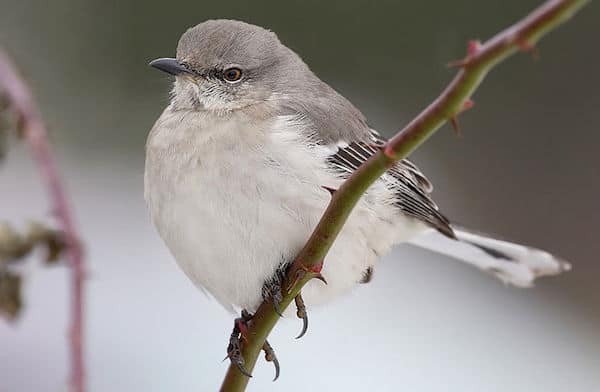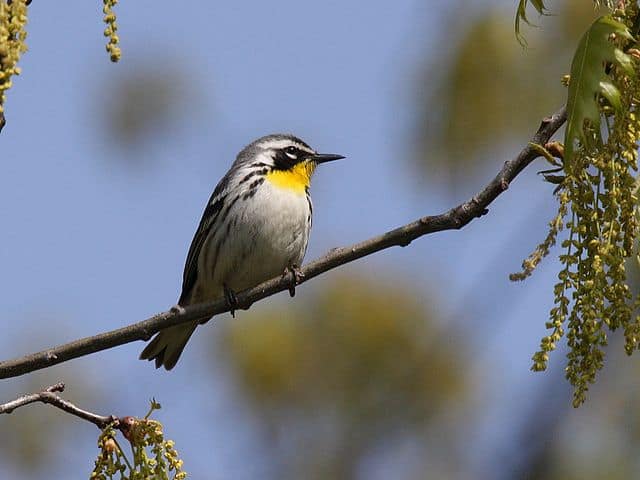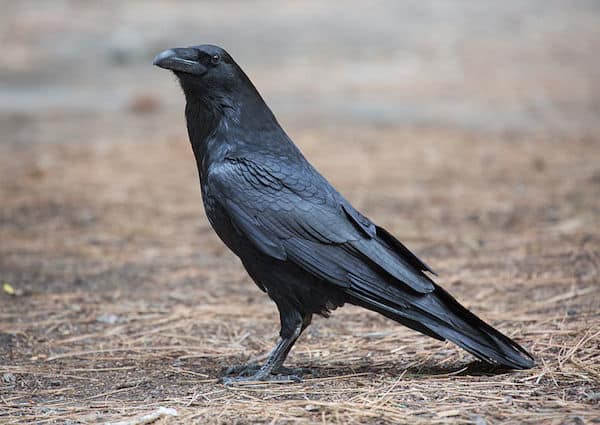Look For
The mockingbird is fairly large (9 to 11 inches long) with medium-gray upperparts and a pale breast and belly. Its long tail is edged in white, and there are prominent white patches on the wings that are especially visible in flight.
The bill and legs are black. The sexes are alike. This bird’s voice more than makes up for its plumage. It is loud, clear and—in spring and summer—nearly incessant.
Listen for
When the moon is bright, mockingbirds will sing at night. The mockingbird tends to repeat each phrase three times before moving on to the next. Both males and females sing.
Its rich, warbling voice and uncanny ability to imitate the calls of other birds—not to mention rusty hinges, frogs, dogs, and squeaky wheels—make it a superstar in any avian chorus.
Individual Northern Mockingbirds may use more than 200 different songs and sounds, including those of birds and other animals and mechanical sounds. Most common call is a harsh tchapp! Five different states have chosen this popular songster as their state bird!
Find it
This formerly southern species has been expanding its range for a century and now covers nearly every corner of the United States. Mockingbirds like to feed in short-grass areas with shrubby edges, so they are common in suburban towns, open city parks, small family farms, hedgerows, backyards, and similar situations. They are non-migratory, present year- round in the areas they inhabit.
Feed it
The diet of the mockingbird is composed of insects (spring and summer) and fruits (summer, fall, and winter). Earthworms, spiders, snails, and other small meaty prey round out the Northern Mockingbird’s menu.
Multi-flora rosehips are a mainstay in winter, and the range expansion of the mockingbird may have coincided with the spread of this alien plant.
Nesting Behavior
During spring courtship, a male mockingbird sings almost around the clock, often from a high perch, all the while jumping up in the air and waving his wings. When a female responds, both partners build the nest, a bulky mass of twigs around a cup of softer plant material, lined with moss and animal hair.
Three to four eggs are laid and incubated by the female for about two weeks. The nestlings are fed by both parents for 12 days until fledging, and for about two weeks after as they learn to fend for themselves.
WOW!
Unmated young male Northern Mockingbirds will sing all night during the spring and summer, especially when the moon is bright, possibly trying to impress the female mockingbirds.




